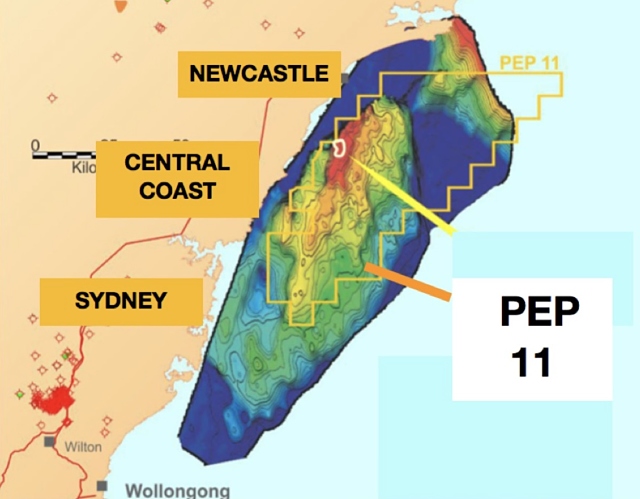BPH Energy releases rebuttle of claims after Labor calls for huge gas project to be blocked

BPH Energy plans to increase its stake in NSW gas explorer Advent Energy from 23% to 36%.
With an announcement on the fate of the huge PEP 11 gas project off the NSW coast reported to be imminent, BPH Energy’s (ASX: BPH) investee Advent Energy has hit back at demands it be abandoned.
Local MPs, Emma McBride (Labour, Dobell) and Lucy Wicks (Liberal, Robertson) have come out against the project and the federal ALP is also calling for PEP 11 to be shut down.
Ms McBride is calling for both the federal and state resources ministers not to renew its licence as it puts the Central Coast’s economic recovery (especially tourism) at risk.
More than 70,000 people have signed a petition against PEP 11.
Community groups are opposed to plans to drill for gas in a 4,500 square kilometre area off of the Central Coast, due to its claimed impact on tourism, fisheries and marine life.

PEP 11 gas project location map.
BPH holds a 23% stake in Advent, which controls the project, with Advent now fighting back on the environmental objections.
Advent claims it is a strong supporter of the Net Zero 2050 plan — it calls for zero carbon emissions by 2050 — and has already proposed carbon capture and storage (CCS), a key clean energy technology.
Carbon capture could be environmental “game changer”
David Breeze, who is both chairman of Advent and executive director of BPH, is defending plans to drill the Baleen prospect, located about 30km south of Newcastle.
“Advent is a strong supporter of plans for Net Zero by 2050 and sees the company playing a direct role in achieving that target, especially in NSW,” he says.
It will do this first by finding gas close to Australia’s biggest domestic energy market and, secondly, explore opportunities for CCS.
“At this stage, we do not know if our drilling will encounter suitable carbon storage rocks.”
“But, based on the offshore seismic results we have obtained so far, we are optimistic,” he added.
Mr Breeze says that CCS could be a real “game changer” for NSW and Australia transitioning to a clean energy future.
CCS is being used in Norway and at the Gorgon project in Western Australia, with Exxon Energy recently announcing a $3 billion clean energy plan including CCS.
Advent, the unlisted oil and gas company based in Perth, holds an 85% interest in PEP 11, with Bounty Oil and Gas (ASX: BUY) owning the remaining stake.
Carbon capture efforts already advanced
In December, BPH announced it had appointed Professor Peter J Cook, an Australian expert on CCS, to join the team working to develop the huge PEP-11 offshore gas field.
PEP 11 covers 4,576 square kilometres.
In September, BPH presented a carbon capture plan for a third of Australia’s greenhouse gas emissions using the planned Baleen gas drilling program in the offshore Sydney Basin.
Advent Energy had previously appointed Prof Cook as an advisor on the geosequestration — the geological storage of carbon dioxide — for this project.
Prof Cook has published more than 30 papers on greenhouse gas technologies, including two books, and was a co-ordinating lead author for the Geneva-based Intergovernmental Panel on Climate Change.
Last week BPH raised $9 million in an oversubscribed share placement to increase its stake in Advent to 33% ahead of the planned drilling of the offshore Baleen gas prospect within PEP 11.
Carbon capture can be 90% efficient
BPH has said CCS is an integrated and well-proven technology that can be 90% efficient when deployed.
The company views PEP 11 as one of the most significant untested gas plays in Australia. It is adjacent to the Sydney-Newcastle area, the largest domestic gas market in Australia.
The Sydney Basin is a major contributor to Australia’s greenhouse gas emissions, BPH noted.
That basin region contains the largest number of carbon dioxide emission sources in Australia, including oil refineries, coke ovens and power stations.
PEP 11 has been pursued since 1981 when the first 2D seismic survey was carried out. That work showed the project area has similarities to the conventional gas fields of the Bowen Basin in Queensland, with a similar age and depth. The Bowen Basin fields have interbedded coal and gas sands of the Late Permian period corresponding to PEP 11.
